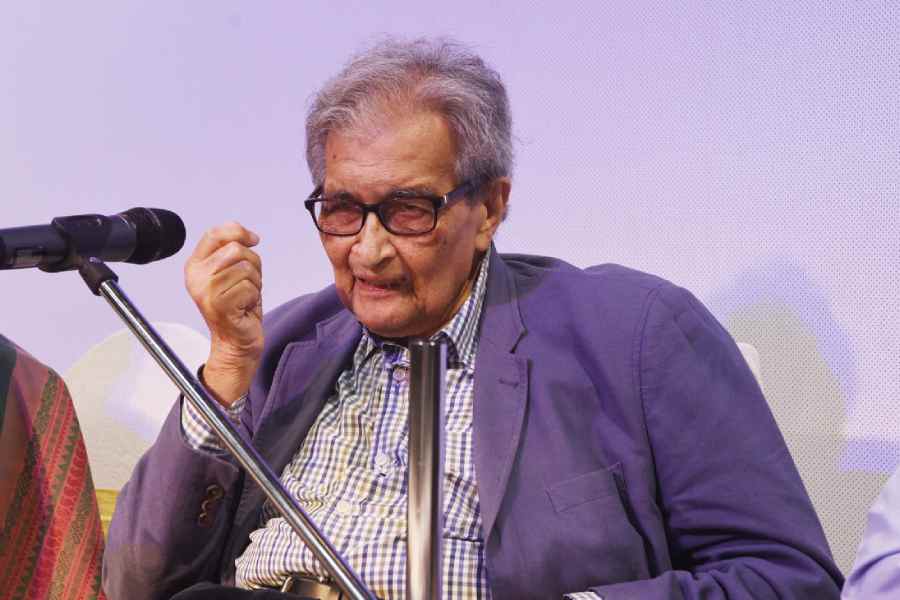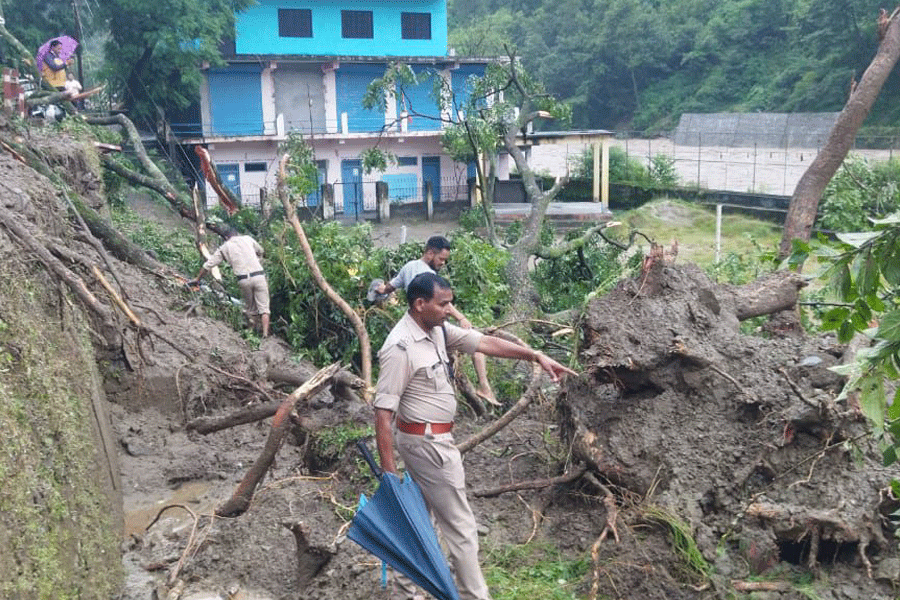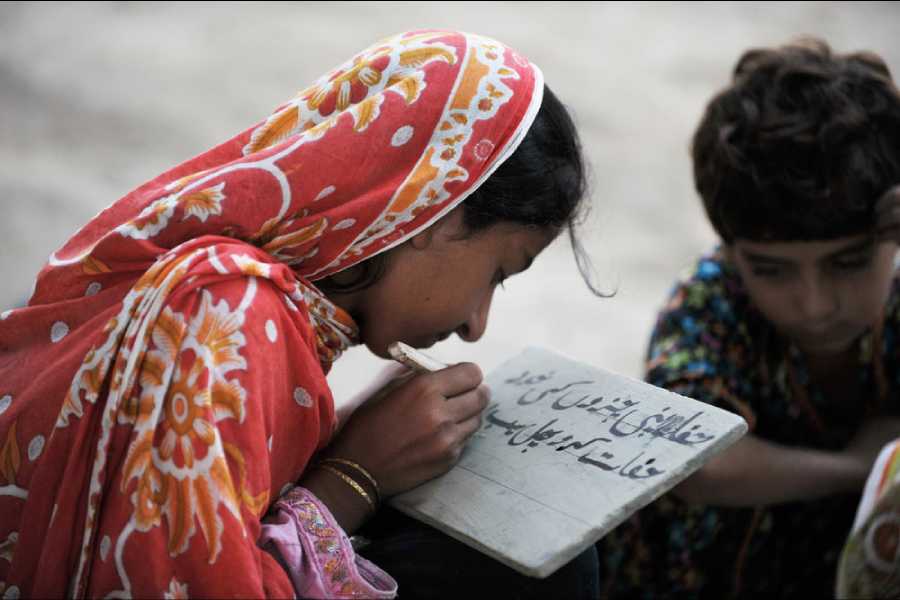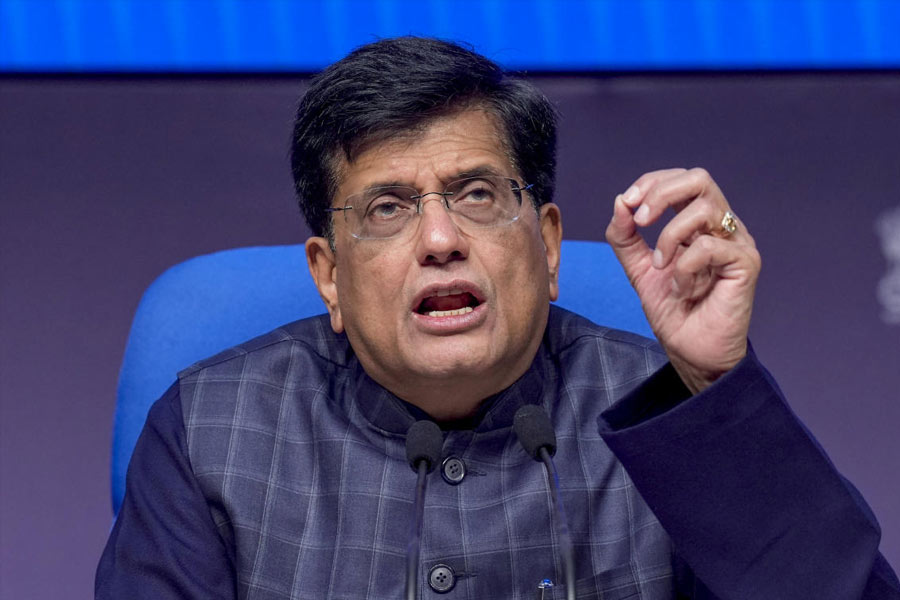
Dibrugarh, Feb. 11: From the moment the first tool was crafted by humans, it was evident that an intrinsic bond between man and machine had been established.
With every turn of the century, engineering acumen was challenged and surpassed with marvels like the Taj Mahal, Eiffel Tower, Burj Khalifa, Golden Gate bridge and Tower Bridge, to name a few.
Nestled in Assam and stretching across the "moving ocean", as the Brahmaputra is often referred to, is another such marvel, the Bogibeel bridge.
The bridge traces its origin to the historic Assam Accord and the sheer duration of the construction - close to 15 years - bears testimony to the fact that it has overcome sundry obstacles.
The 4.94km structure, costing Rs 5,000 crore, is poised to become the longest rail-cum-road bridge in the country.
By connecting the north (Dhemaji) and south (Dibrugarh) banks of the Brahmaputra, the bridge will drastically reduce travel time. It takes over an hour to cross by boat, longer during the monsoon. When completed, one can cross the bridge by car in less than 10 minutes.
With almost 75 per cent construction completed, Hindustan Construction Company (HCC), the muscles behind the famous Bandra-Worli Sea Link in Mumbai, is hopeful of meeting the December 2017 deadline for the project. However, March 2018 seems to be more realistic, according to project manager Santosh Kumar Misra, who has been associated with it for five years.
When asked about the delay in construction, Misra said, "Construction slowed down primarily because the water level of the Brahmaputra decreased drastically during summer in the last four years, besides the river constantly changing course."
This concern was echoed by a construction worker at the site: "Building a bridge across the mighty river is no mean task, especially as work largely takes place during the dry period between November and March. However, the last two years have seen huge progress and we are confident that it will be completed in time."
HCC chief executive officer Arun Karambelkar said over phone from Mumbai: "The Brahmaputra is mighty, and therefore, Bogibeel bridge is a unique project."
When asked whether HCC faced any problem in making payments to sub-contractors and workers because of demonetisation, Karambelkar promptly said "no".
This will be the first fully welded steel bridge of the railways, much stronger than bolted or riveted bridges. A double-decker structure, it will have two railway tracks on the lower deck and a three-lane road on the upper deck, flanked by footpaths.
An HCC representative said use of latest technology in engineering, like seismic restrainers, lean frame and electric arc welding has given the structure longevity, besides making it cost-effective. The superstructure employs welded steel joints rather than nuts and bolts, ensuring that there are no gaps in the spans, besides saving tonnes of steel.
With the Centre's thrust on Act East policy, Bogibeel bridge is a premiere project in the Northeast. It would not only be a huge boost to connectivity, especially in providing access to Arunachal Pradesh, but is also of prime strategic importance as it will enable the army, which has a base in Dibrugarh, to take men and supplies to the Sino-Indian border and bolster the country's defence.
The bridge, standing on 42 piers, is expected to greatly benefit underdeveloped areas in Assam, especially the north bank, and Arunachal. Almost 2,000 workers are engaged in the construction. "Of them, around 450 are locals," Misra said.
The colossal structure, when completed, will literally become a "bridge" that not only plugs the connectivity gap but also the economic divide that exists between the two banks of the Red River.










